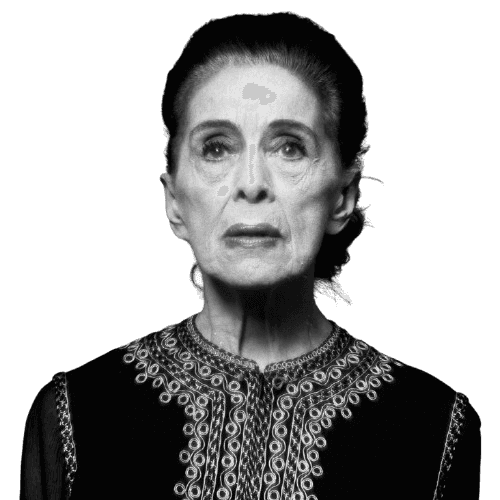Life and achievements
Early life
Martha Graham was born on May 11, 1894, in Allegheny City, Pennsylvania, now part of Pittsburgh. Her father was a physician specializing in mental diseases, and this early influence shaped her work later. Her strict Presbyterian upbringing provided her with a background of discipline and self-restraint, which was to be set against liberation through dance.
When she was fourteen, her family relocated to Santa Barbara, California, and it was here that Graham first experienced the art of dance. She was inspired by the art of dancing after watching a performance of Ruth St. Denis. This inspired her to join the Denishawn School, where she trained with famous modern dancers St. Denis and Ted Shawn. She learned a lot at Denishawn, but Graham knew that she wanted to do something new that she could call her own company.
By 1926, Graham had already started her own company in New York City. She started working on her unique approach from her small studio in Carnegie Hall. Her technique, which was based on contraction and release, focused on the ability of the body to contract and relax and introduced a new element of the emotional aspect to the dance.
Legacy
It can be said, without exaggeration, that Martha Graham changed the face of dance as the world knew it. She revolutionized modern dance, adding psychological and emotional aspects that had not been seen before. For example, many of her pieces featured complex and empowered women—Medea and Joan of Arc. Her pieces were not only dances but social commentaries.
Graham's legacy has continued even after she has long left the world. Almost all of the twentieth century's most significant choreographers and dancers studied her method or were influenced by her creations. Her own company, Martha Graham Dance Company, which she established in 1926, keeps dancing her pieces and developing modern dance. Her technique is still used as an introductory course in contemporary dance education and is taught in schools worldwide.
She also received many awards and honors throughout her life. Graham was the first dancer awarded the Presidential Medal of Freedom and posthumously inducted into the National Women's Hall of Fame. Her impact is universal and transcends genre and discipline, so she is akin to Pablo Picasso and Igor Stravinsky—the great innovators of the twentieth century.
Milestone moments
Apr 25, 1926
Martha Graham Dance Company
Martha Graham established the Martha Graham Dance Company in New York City in April 1926.
This was one of the first modern dance companies and became the venue for Graham's original work.
Her first solo concert was a set of 18 solos and trios, which was performed at 48th Street Theatre; this is considered the beginning of her impact on modern dance.
Graham's company focused on dance as an aesthetic art, which differs from ballet as a decorative art.
The company's formation cemented Graham's position as the pioneer of modern dance, which she would hold for several years.
This moment marked the basis of her future impact on dance education and performance all over the globe.
May 25, 1930
The Premiere of "Lamentation"
The solo piece Lamentation, one of the most famous Graham's works, was presented for the first time in New York in May 1930.
Lamentation also demonstrated Graham's capacity to present grief and other human feelings through simple movements.
In this piece, she is tied in a fabric tube and sits on a bench, twisted and contracted to reflect the pain of loss.
The piece also acquainted the audience with the contraction and release method, which is characteristic of Graham's method of movement.
This became one of her most famous performances and helped her become a modern dance pioneer.
The success of Lamentation proved that Graham could convey powerful emotions through dance, paving the way for succeeding generations of choreographers.
Nov 25, 1944
Appalachian Spring's Debut
Martha Graham first performed the highly acclaimed ballet Appalachian Spring in November 1944 in Washington, D.C.
This was created in cooperation with composer Aaron Copland.
Isamu Noguchi created the set for Appalachian Spring, which depicted the life of a pioneer couple; hence, the themes of hope and hardship were explored.
This performance received much appreciation and represented American culture and the American spirit.
Copland's Pulitzer Prize-winning score helped ensure its success, and Graham's choreography was another step forward in establishing narrative ballet.
The work is still considered one of the most significant pieces of twentieth-century dance and is still interpreted by companies today.
Jul 25, 1948
Marriage to Erick Hawkins
In July 1948, Graham married Erick Hawkins, a dancer and choreographer, who joined her company.
Hawkins was the first man to dance in Graham's company, and they were married both in business and life.
They had a series of performances as a couple, creating masterpieces such as Appalachian Spring and Night Journey.
The marriage, however, was not happy, and they divorced in 1954, with Hawkins leaving the company.
While their marriage was over, Graham had a rather creative period of collaboration with Hawkins professionally.
This relationship focused on the interaction between Graham and male dancers and how she assimilated male roles into her work.
